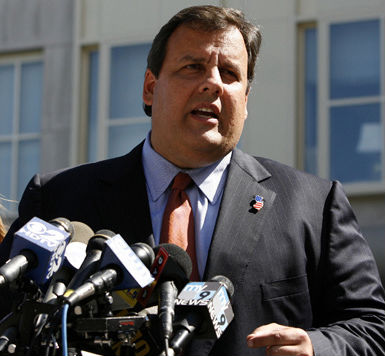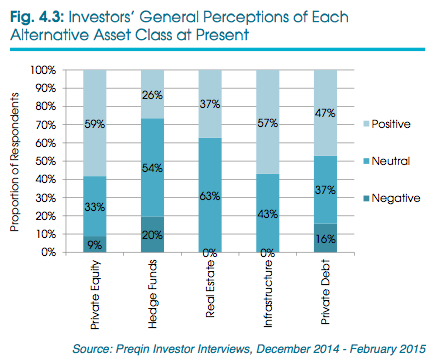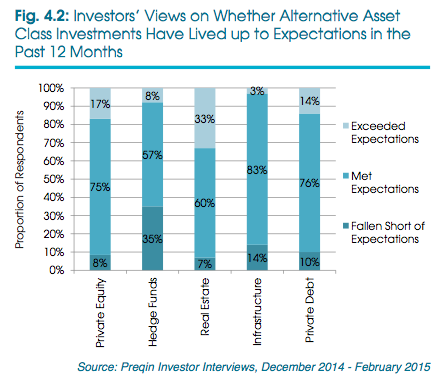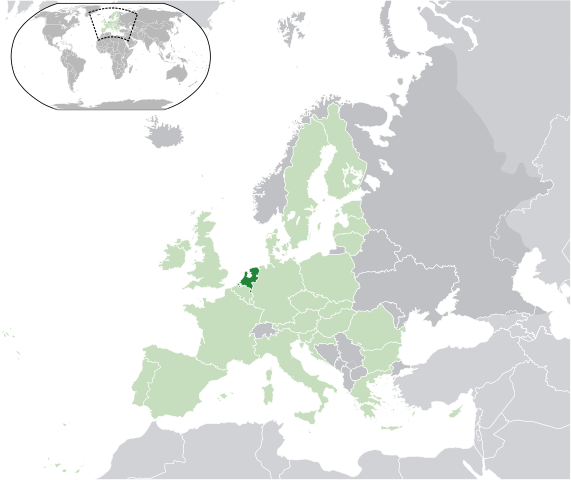
Leo Kolivakis is a blogger, trader and independent senior pension and investment analyst. This post was originally published at Pension Pulse.
Ashley Csanady of the National Post reports, Ontario to start implementing new pension plan in 2017, with full roll-out expected by 2020:
Ontario’s pension plan will come in waves, but all employees in the province will be covered by a workplace plan or the new provincial design by 2020, Premier Kathleen Wynne said Tuesday.
The Ontario Retirement Pension Plan will start requiring contributions from the largest employers, those with more than 500 workers, in 2017. However, employers who already offer mandatory, registered pension coverage will be exempt if their plan is deemed comparable to the ORPP by the province. Companies whose pension plans are currently optional for employees or who don’t meet that threshold will have until 2020 to bring their plans up to snuff.
After the announcement, she admitted that the Liberals have no idea how much it will cost to run the new pension plan.
“We don’t know what those costs will be yet,” she said.
The pension plan was a major plank of the Liberals 2014 budget and the subsequent election campaign. Though some details were announced at the time, Tuesday marked the first time the province clarified who the ORPP would capture and how it plans to phase in the plan.
In 2022, people who are 65 or older can start drawing on the ORPP, though how much they will be eligible for is not yet known. Workers, whether part-time or full-time, will start contributing at age 18 and can do so until they turn 70. The Canada Pension Plan, upon which the ORPP is modelled, exempts workers who make less than $3,500 a year, but the province is still consulting on that minimum threshold.
The goal is to bridge the gap for the two thirds of Ontarians without a workplace pension plan and the half of workers who contribute to neither a workplace plan nor an RRSP. The hope is 3.5 million Ontarians will be part of the plan by 2020 and all workers will be enrolled either in the provincial option or a workplace pension.
The plan will collect 1.9 per cent of a workers’ income up to $90,000 from both employers and employees to a total of 3.8 per cent, or a combined total of $3,420 a year. That means those making $90,000 a year would pay just under $33 a week into the ORPP if they don’t have a comparable workplace plan and their employers would match that. That province believes that will result in over $12,800 a year in retirement income once the plan is fully implemented and if they pay into the ORPP for 40 years.
People making $45,000 a year, would pay just over $16 a week into the plan, which would also be matched by employers for an annual combined contribution of $1,710. Estimates suggest they will receive over $6,400 a year in retirement income once the plan is fully implemented and if they pay into the ORPP for 40 years.
The contributions will likely be slightly lower once an exemption for the first few thousand dollars of income earned is accounted for, as is the case with the Canada Pension Plan
Administration costs for the plan will likely run between $130 a person and $200 a person, officials said.
Employers with mandatory defined benefit plans — plans that offer a set amount of retirement income that remains constant over employees’ lifetimes — that save at least 0.5 per cent will be exempt. Employers with defined contribution plans — plans that don’t offer a set amount of income but are instead open to the fluctuations of the market — must sock away at least 8 per cent of employees’ income. All employees in a company must be enrolled for it to be exempt. Employers with optional plans will have until 2020 to make them mandatory or they will have to join the ORPP.
The costs to employers who must enroll will be 1.9 per cent of their total payroll.
Richard J. Brennan of the Toronto Star reports, Wynne calls proposed Ontario pension plan ‘right thing to do’:
Premier Kathleen Wynne is standing firm on bringing in a made-in-Ontario pension in the face of widespread criticism.
After details for the proposed Ontario Retirement Pension Plan (ORPP) were revealed Tuesday, Wynne said something has to be done for the two-thirds of workers in the province who don’t have a workplace pension.
“I believe it is the right thing to do,” Wynne said of the plan, noting that two our of three Ontario workers have no pension plan other than the Canada Pension Plan (CPP), which she says is just not enough at an average of $6,900 a year.
Her biggest critic, federal Conservative Leader Stephen Harper, who was campaigning in the GTA, said the proposed pension plan was a job-killing tax.
“That’s a huge tax hike. It’s not a good idea. It’s a bad thing for the middle class and it’s obviously a bad thing as well for jobs. And it’s a bad thing for our economy,” said Harper in Markham.
The Canadian Federation of Independent Business, representing small- and medium-sized business, is also fiercely critical of the Ontario pension plan, predicting it will result in job loss.
Wynne acknowledged the missing piece remains how much it could cost to create the ORPP.
But she said she is determined to ignore the critics and push ahead on the plan that would see all Ontario employees belong to a workplace pension plan of one kind or another in five years.
Companies that already have comparable workplace pension plans will be exempt from the ORPP, which is to be phased in by 2020. Like the Canada Pension Plan, the ORPP would be equally funded by both employers and employee — 1.9 per cent from each.
ORPP details show that a person making $45,000 a year will pay $2.16 a day. It will go up to $4.50 a day for someone making the maximum of $90,000 annually.
The plan, according to a Liberal government release, will be fully implemented by 2020 and affect about 3.5 million in Ontario, with benefits starting to be paid out two years later. Participants must be 65 or older before they can collect.
According to the ORPP details, a person making $45,000 a year for 40 years will receive $6,410 a year for life, compared to $12,815 a year for life for the top $90,000 earners — equal to about a 15 per cent return after four decades.
If approved, the ORPP would begin in 2017 with large-size employers — 500 or more employees — without registered workplace pension plans. Medium-size employers with 50 to 499 employees without registered workplace pension plans would start to contribute in 2018. The plan will not include small-size employers until 2019.
Harper has refused to increase CPP benefits as requested by several provincial leaders; he has also has decided the federal government will not administer the plan for Ontario.
He said he was “delighted” his government’s refusal to co-operate with the plan is making it harder for the Ontario government to implement the program.
Wynne said Harper, whose federal pension would be about $140,000 a year, has decided there isn’t a need across Canada for supplementary provincial pension plans “and is now standing in the way of trying to help us implement this plan.”
Federal Liberal Leader Justin Trudeau has said if his party were to form a government it will look at expanding the CPP, along the lines of what Wynne is suggesting.
Harper was not alone in his condemnation of the ORPP, which would be phased in over the next five years for firms that don’t have a pension plan at all, or one that is not comparable to the ORPP. Business leaders say many companies simply can’t afford it and that if it is forced on them it could mean layoffs.
“I have to make it clear that most small- and medium-size businesses don’t have a pension plan right now, not because they don’t want to have one, it’s because they can’t afford it. And I think that is a point this government has missed since the very beginning of this conversation,” said Plamen Petkov, CFIB’s Ontario vice-president.
Petkov said employers will be left with having to leave the province altogether or reduce staff in order to cover their pension contributions.
Progressive Conservative MPP Julia Munro said people are going to lose their jobs because of this pension plan.
“Small businesses in particular will be forced to reduce their staff to compensate for the mandatory contribution of nearly 4 per cent (in total) from each employer and employee,” Munro said, who further criticized the government for not producing a cost/benefit analysis.
Allan O’Dette, president and CEO of the Ontario Chamber of Commerce, said the OCC remains concerned the ORPP in its current form “will have a negative impact on business competitiveness.”
Sid Ryan, president of the Ontario Federation of Labour, said the fact the ORPP is not going to be universal — unlike the CPP — will cause no end of problems, including driving up the cost of administration.
“The magic of the CPP is that it is universal — all workers are covered — and as a result of that you have low administration costs. What was announced today is a mish-mash of that,” he told reporters.
Meanwhile, the Canadian Labour Congress is calling for a doubling of the CPP benefits.
By the numbers
— With files from Bruce Campion-Smith
For the 3.5 million workers expected to participate in the Ontario Retirement Pension Plan:
- An employee making $45,000 a year will contribute $2.16 a day or $788.40 a year.
- An employee paid $70,000 a year will contribute $3.46 a day or $1,262.90 a year.
- An employee earning the maximum of 90,000 annually will shell out $4.50 a day or $1,642.50 annually.
Payouts after 40 years:
- An employee making $45,000 a year would receive $6,410 a year for life.
- An employee with a salary of $70,000 a year would receive $9,970 a year for life.
- An employee making $90,000 a year would receive $12,815 a year for life.
When fully implemented the ORPP would bring in about $3.5 billion annually.
Lastly, Robyn Urback of the National Post reports, Kathleen Wynne doubles down on pension plan that will cost TBD and solve (insert):
On Tuesday morning, Ontario Premier Kathleen Wynne stood in front of a group of reporters as they asked her questions about the new provincial pension plan, to be rolled out in phases between 2017 and 2020. The premier had just delivered a near 20-minute monologue about the accolades of the new program, despite the fact that many of the specifics will surely depend on who forms the new federal government after the October election. Indeed, it probably would have made more sense to give an update in the fall, but why put off until tomorrow when you can remind Ontarians that Stephen Harper is “standing in the way” of comfortable retirement today?
Tuesday marked the first time Wynne clarified some of the exemption rules of the Ontario Retirement Pension Plan (ORPP), which the Liberals campaigned on during last year’s provincial election. As of 2017, companies with more than 500 employees will be required to start contributing to the plan, unless they already offer comparable mandatory defined benefit or contribution pension plans. Those without will be required to contribute 1.9 per cent of each employee’s salary up to $90,000, which combined with an equal contribution from employees will mean a total of 3.8 per cent. According to briefing documents, those earning $45,000 would contribute $2.16 per day to the plan, whereas an employee earning the maximum amount — $90,000 —would contribute $4.50 per day. By the time the program is fully implemented to include all employers by 2020, the government expects 3.5 million Ontarians will be covered by the ORRP.
Naturally, the briefing left some questions unanswered: How will the ORPP incorporate self-employed Ontarians? Would the Ontario government scrap the program if the federal government expands CPP? And what will be the administrative costs of rolling out the program?
The answer, in each case, was essentially a shrug: “We are working to make this a low-cost plan,” the premier said, conceding that at this point she can’t speak to numbers. That is, of course, quite rich from a government lecturing Ontarians about improperly managing their finances. Pressed on how the plan might affect employees who might not be able to afford setting aside an extra 1.9 per cent, Minister of Finance Charles Sousa cited the billions in unused RRSP contributions as evidence that people can save for retirement, but are choosing not to.
In fact, there is ample evidence that Ontarians are much better prepared for retirement than the government would have us believe, between CPP, Old Age Security, RRSPs, savings and private equity. Indeed, a June report from the C.D. Howe Institute suggested that most of us can retire comfortably on less than the traditional 70 per cent of pre-retirement income target, considering that many of our daily budget strains (childcare, mortgage payments, etc). settle by the time we reach retirement age.
What’s more, another recent study from the Fraser Institute found that forced government savings plans might very well offset Canadian households’ private savings after looking at CPP investment in the 1990s and finding that with every percentage point increase in CPP contributions, private savings dropped by 0.895 percentage points. This suggests that Ontario’s forced savings plan won’t actually ensure that Ontarians save more, but simply that they save differently. It also just so happens to ensure that the $3-billion or so to be collected annually by the time the ORPP is fully implemented in 2020 will kept in the hands of the government, allowing for “new pools of capital for Ontario-based project such as building roads, bridges and new transit,” as stated in last year’s budget. Oh yes, and for your retirement.
In sum, the Ontario government is excitedly moving forward on a plan that will cost X, to solve Y, which will cost you 1.9 per cent of your annual income. The government may or may not abandon the plan if the federal government expands CPP, but hey, we might be able to finance new roads! Ontarians cannot afford to retire, but they can afford another forced savings plan. Any questions?
Yes, I have a question. When did the National Post become a preeminent authority on good pension policy? Citing research from right-wing think tanks like the Fraser Institute and the C.D. Howe Institute which are funded by Canada’s powerful financial services industry isn’t exactly what I call objective reporting. It’s sloppy and heavily biased reporting.
Don’t get me wrong, I’m sure the affluent, pro-Conservative readers of Ontario who read the National Post as if it were the bible of reporting lap this stuff up. Unfortunately, it’s inaccurate at best, complete scaremongering rubbish at worst.
This is all part of a series of dumb attacks on the ORPP which fail to delve deeply into why absent an enhanced CPP initiative, which will never happen under Harper’s watch, the ORPP makes good sense from a pension and economic policy perspective:
[…] there is no denying that Ontario has the best pension plans in the world. Go read my comment on Ontario Teachers’ 2014 results as well as that on the Healthcare of Ontario Pension Plan’s 2014 results. There are a lot of talented individuals working there that really know their stuff and you have to pay up for this talent. The same goes for CPPIB, OMERS, and the rest of the big pensions in Canada. If you don’t get the compensation right, you’re basically condemning these public pensions to mediocrity.
What else does the National Post comment miss? It completely ignores the benefits of Canada’s top ten to the overall economy but more importantly, it completely ignores a study on the benefits of DB plans and conveniently ignores the brutal truth on DC plans.
But the thing that really pisses me off from this National Post editorial is that it fails to understand costs at the CPPIB and put them in proper context relative to other global pensions and sovereign wealth funds with operations around the world and relative to the mutual fund industry which keeps raping Canadians on fees for lousy performance. It also raises dubious and laughable points on the Caisse and QPP with no proper assessment of the success of the Quebec portfolio or why our large public pensions can play an important role in developing Canada’s infrastructure.
But the National Post is a rag of a national newspaper and I would expect no less than this terrible hatchet job from its editors. The only reason I read it is to see what the dimwits running our federal government are thinking. And from my vantage, there isn’t much thinking going on there, just more of the same nonsense pandering to Canada’s financial services industry and the brain-dead CFIB which wouldn’t know what’s good for its members if it slapped it across the face (trust me, I worked as a senior economist at the BDC, the CFIB is clueless on good retirement policy and many other policies).
I might come off like an arrogant jerk but I stand by every word I wrote in that comment. Canada has some of the best defined-benefit plans in the world and instead of building on their success and enhancing the retirement security for millions of Canadians, our Prime Minister is pandering to the financial services industry and lying by claiming the contributions from enhancing the CPP or initiating an ORPP is a “tax” and jobs killer”.
Canada is going to experience a major economic slowdown in the next couple of years. The unemployment rate will soar but it has nothing to do with ORPP or enhancing the CPP. It’s called the business cycle and the fact that Canadians were living in dreamland for so many years benefiting from China’s insatiable appetite for our resources and the U.S. recovery after the 2008 crisis.
But the good times are over for Canada. Canadians are in for a very rude awakening as the China bubble bursts and China’s big bang wreaks havoc on our stock market and overvalued real estate market. I’ve actually been short the loonie since December 2013 and think it can head lower, especially if global growth doesn’t pick up in the months ahead.
So why would you want to enhance the CPP or introduce the ORPP in this wretched environment? The answer is that stock market and economic fluctuations aside, bolstering our retirement system makes good sense from an economic perspective over the very long-run. It will actually help create jobs as workers retire and receive a secure payment for life, consume more, pay more in sales taxes and don’t require government assistance to get by.
Is the ORPP a perfect solution? Of course not. I want to see the federal government wake up already and enhance the CPP for all Canadians. I want to build on the success of our existing large defined-benefit plans and provide better coverage for all Canadians, just like we do in healthcare and education.
As far as the three parties running now, in terms of pension policy, I don’t like any of them. The Liberals want to introduce “voluntary CPP” which is a stupid idea (make it mandatory!) and the NDP are fuzzy when it comes to mandatory, enhanced CPP and want to increase corporate taxes to fund their social initiatives at the worst possible time.
I also think the Liberals are stupid for wanting to get rid of TFSAs or clawing back on them. TFSAs are far from perfect but they’re popular with Canadians, especially doctors, lawyers, accountants and other hard working professionals who have no retirement plan and need to save more. I personally love the TFSA and the Registered Disability Savings Plan (RDSP) which Jim Flaherty introduced back in 2008 (God bless him).
But now that Jim Flaherty departed us, there isn’t much economic thinking going on with the Tories. In fact, the Conservatives pledged Wednesday to let first-time buyers withdraw as much as $35,000 from their registered retirement savings plan accounts to buy a home, in a yet another election move aimed at the housing market. Great move, have people take out money from their RRSPs to buy an overvalued house right before the great Canadian real estate bubble bursts!
Photo credit: “Canada blank map” by Lokal_Profil image cut to remove USA by Paul Robinson – Vector map BlankMap-USA-states-Canada-provinces.svg.Modified by Lokal_Profil. Licensed under CC BY-SA 2.5 via Wikimedia Commons – http://commons.wikimedia.org/wiki/File:Canada_blank_map.svg#mediaviewer/File:Canada_blank_map.svg



![Video: I’m Not An Impact Investor…Or Am I? [Panel Discussion]](http://pension360.org/wp-content/uploads/2014/12/4555108439_c3aba7565b_z.jpg)







